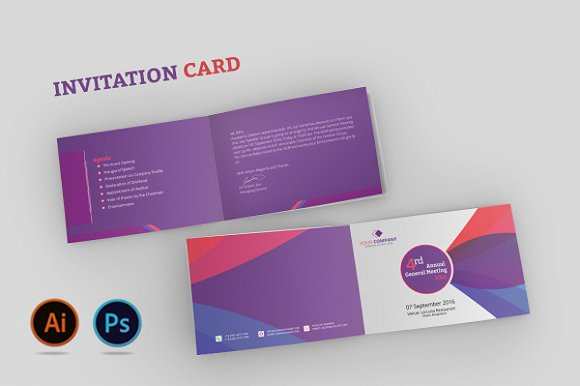14+ Official Meeting Invitation Examples to Download
A general meeting can be a formal or informal assembly of members under the same jurisdiction who come together to discuss relevant issues or problems in order to talk about possible solutions or answers. This can also be organized for important announcements or general subjects that need to be discussed as a whole.
Meetings are characterized as scheduled gatherings with a specific date, time, venue, duration, agenda, and participants. These are headed by a chairperson who is usually the one who introduces the subject of the day’s meeting. The specification and topics discussed during the assembly will also be written down by a secretary in the form of what is called the minutes of the meeting. You may also see event invitation examples.
Business Meeting Invitation Design
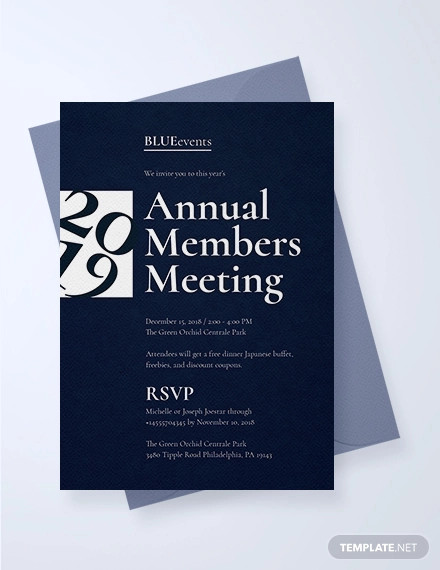
Annual Meeting Invitation Card
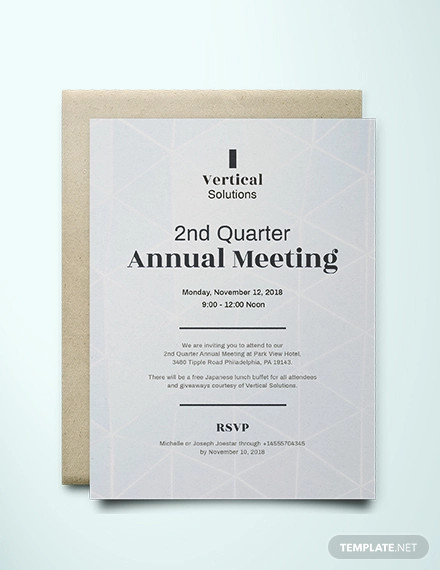
Sample Annual Meeting Invitation

Free Official Meeting Invitation Template
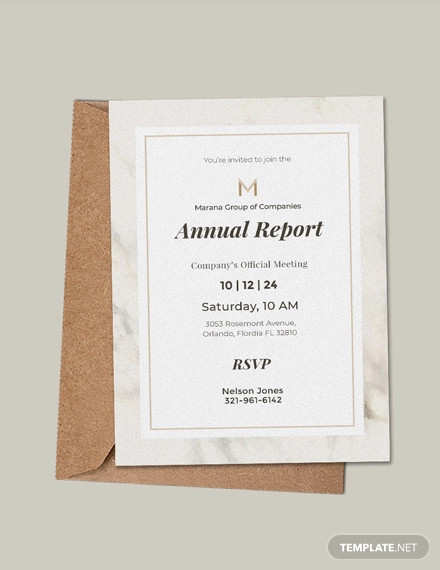
Corporate Annual Meeting Invitation Example
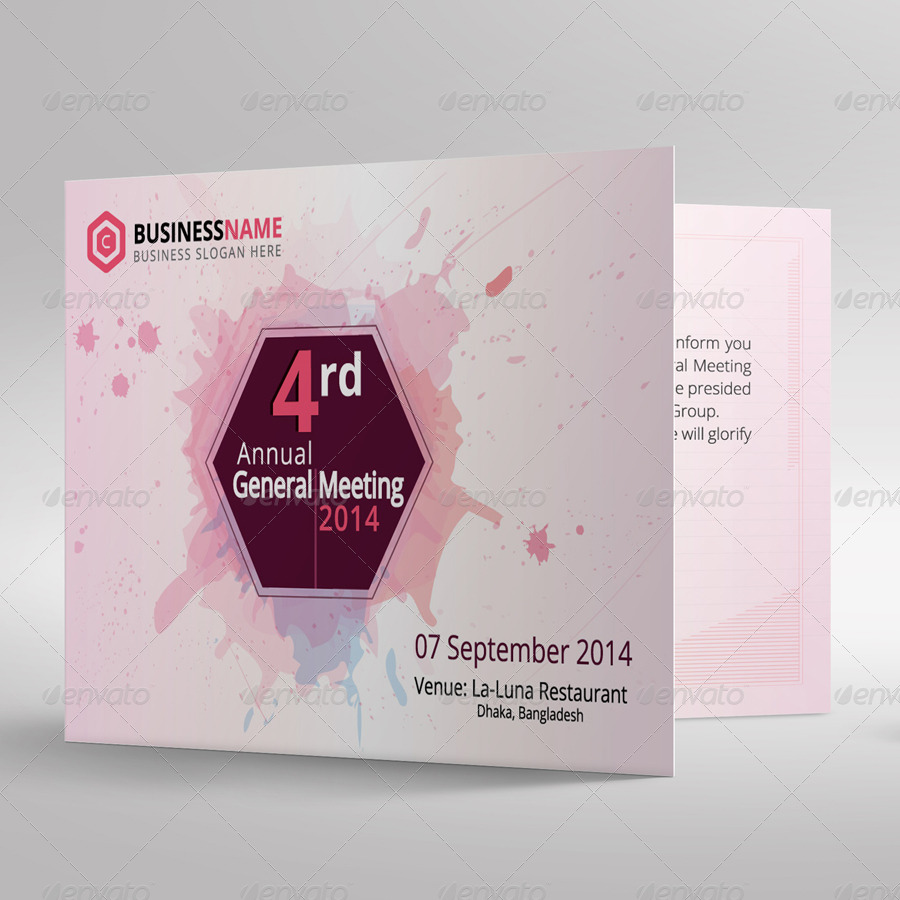
Official Parent Meeting Invitation Example

Two Company Divisions That Hold Meetings
Companies or business organizations usually have organizational and operational sections. Although both are mainly a future plan by the company, these two divisions hold separate meetings since they traverse different contexts of the same area. This also means that they discuss different matters during meetings since they face different issues. You may also see party invitation examples.
Here are a few of their distinctions:
1. Time.
Your organizational plan usually deal with long-term goals such as the company’s call to action four or five years from now. The operational plan, on the other hand, takes care of more immediate goals to achieve particularly within the next fiscal year.
2. Goal.
Organizational plans explore the company’s deep-rooted visions and goals for the entire company. Where will the company be ten years from now? This is the objective that all the company departments should work hard towards. The operational deals with more specific, department-wise development. Which is why large companies often have multiple operational plans to cater to the diverse needs of one department. There can also be instances where operational plans between departments overlap. You may also like examples of graduation invitation design.
3. Budget.
Since these two sections have different approaches, it only seems logical that they have separate funding as well. The organizational plan has a monetary allocation for itself while the operational plan takes its budget from the department’s annual allowance. However, departments cannot help having budget cuts. In cases like this, it is best to cut the budget for activities or marketing strategies that are not directly in line with your operational plan in order to give priority to those that are.
4. Report.
Both organizational and operational plans have monthly reports to submit. The difference is that organizational plans tend to look at the general performance of the company, using the qualitative method to express improvements. A lot of companies also keep running commentaries that are updated each month. Their meetings are also more in the general perspective since the main focus is on the company as a whole. You may also check out examples of invitation envelope.
Operational plans’ reports, on the other hand, are more tedious in comparison. They can be quite lengthy since they discuss in specifics the hundreds of tasks that department members work on. Their meetings are conducted to give the department heads an idea on how the individual projects are going.
Annual Meeting Invitation Card
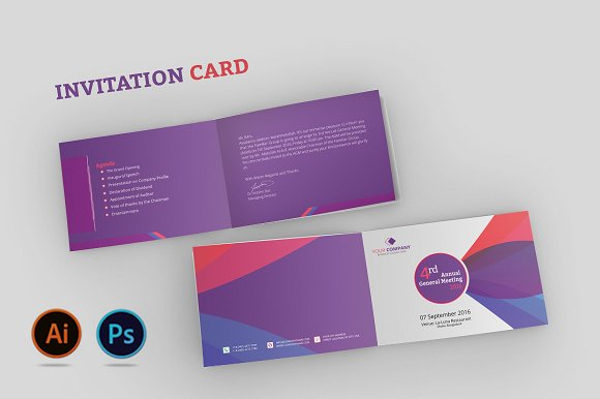
Greet Baby Boy Meeting Invitation
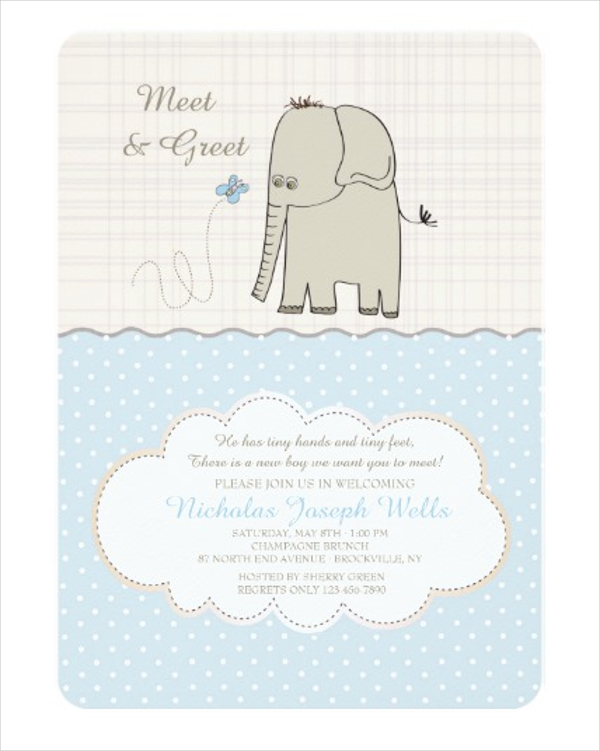
Types of Meetings
Meetings are also divided into categories depending on their urgency and purpose:
1. Ordinary or Regular Meeting.
These are the most common types of meetings. These are held on a regular basis and mainly tackle small issues or announcements.
2. Special or Extraordinary Meeting.
Although it sounds extra important, special meetings are actually just meetings that occur outside the regular timetable or, in other words, simply unplanned. They are only named thus because they are outside the normal day-to-day occurrence. However, special meetings can also pertain to meetings with a lot of prior requirements such as: the length of notice before the meeting, special quorum, the authorization of proxy votes, and other requirements required to you by your company’s constitution. You may also see invitation flyer designs & examples.
3. Annual General Meeting.
As the name suggests, these are meeting held once a year with the participation of all the members of the company or organization. During these, the department heads will discuss an overview of their reports, finances for the next 12 months will also be explored, a new set of officers, if necessary, will also be elected. Changes to the organization’s constitution will also be discussed here. You may also like bridal shower invitation examples.
4. Special General Meeting.
This type of meeting holds qualities similar to the annual general meeting. The only difference is that these meeting focus more on financial discussions and changes to the constitution, and they may occur anytime of the year.
Once you know the type of meeting you will be having and the company plan that you will use for your meeting’s approach, it is now time to discuss your meeting invitation. Most meetings require the organizer to send out notices to the expected meeting participants ahead of time. This is so they can prepare for the necessary requirements they would need for the meeting, such as reports. To make an effective invitation, you must first be able to identify the following:
Who. This section should include the people expected to attend the meeting, and if the assembly is exclusive to them or if they can invite other people to come along. This is an important detail to include since there are some meetings wherein you will have to discuss sensitive issues that should only be between certain people so it’s best to identify the appropriate audience for your meeting. You may also check out breakfast invitation designs and examples.
What. What is the nature of the meeting?
Why. Of course, you need to learn your meeting’s purpose and why it should occur.
Where. Choose an appropriate venue and prepare for the possible expenses that might come along with the place if it is not within your company’s premises.
When. Pick a schedule that is best, not only for you, but also for your participants. What’s the point of having a meeting if your members are too busy on that day to attend? This is also the importance of informing your members in advance. So they can free themselves for the meeting. You might be interested in examples of wedding invitation design.
Society Meeting Invitation
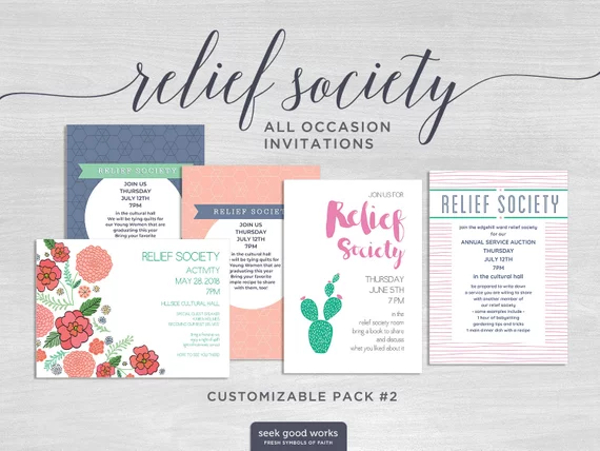
Spring Frame Meeting Greet Invitation
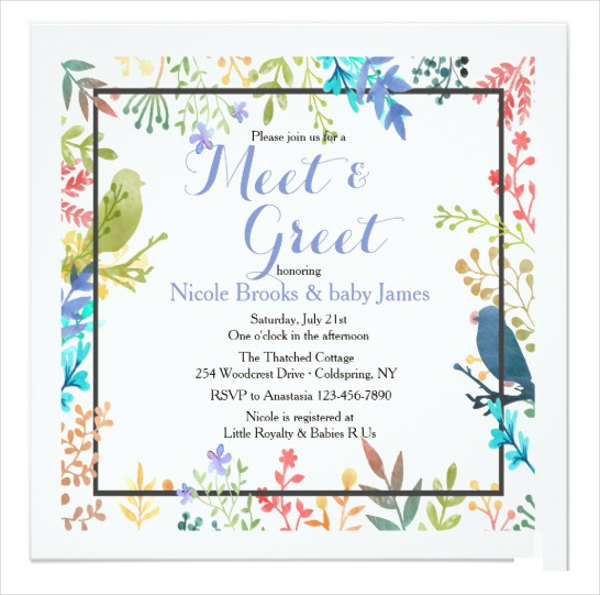
Coffee Meeting Invitation

How To Write An Invitation Letter
When you have finished finalizing the important details of your meeting, it is now time to create your invitation. Here are the steps on how to build your invite’s structure:
1. Your subject line.
For email invitations, this is one of the most important parts of an invitation because the subject line is the first one that your recipients will see, which means that they make the difference between your email being read and being ignored.
2. Opening and closing remarks.
Your simple invitation’s opening remarks should appear approachable and warm while your closing remarks should be friendly enough to make your recipient feel your sincerity in wanting their appearance in your meeting. By doing this, your recipient is also more likely to give a positive response to your invite.
3. Your meeting’s purpose.
This is the most important part of your invitation since this is the main reason you’re sending one. So make your purpose clear on your invitation because this can make the difference between your recipient wanting to come or not.
4. Details.
Of course, you need to include the details of your meeting on your invitation for reasons you should already understand.
5. RSVP.
Including an RSVP on your email can help you avoid expecting people to come when they can’t. It can also help you estimate the crowd during your meeting. You may also see baby shower invitation examples.
Neighbors Meet & Greet Invitation

Tips on Writing Invitation Letters
1. Make it personal.
If you want to gain a higher response rate, then take this tip to heart. The special thing about making not only your invitation letters but everything else you do more personal is that it will appear more sincere. It gives your recipient the feeling that you’re regarding them more than a colleague or a random workmate and this will instantly make them warm up to you. You may also see birthday invitation designs & examples.
Yes, invitation letters should be professional and concise. But that doesn’t mean you should make it sound cold and haughty. Doing so will make your members see you as distant and this will not bode well for your professional relationship. As much as possible, try to engage with your invitation letters. After all, you’ll be spending an hour or so with them in a meeting. You would want to establish a positive connection with these people.
2. Keep it short.
As aforementioned, invitation letters should still be professional and concise. Only include the important details because the rest of the information can be discussed during the meeting. Also, you don’t want to bother your recipients with really lengthy invitations. They are working people with better things to do than get absorbed in your loquacious invitation. You may also like holiday invitation examples.
3. Set a reminder.
Since your meeting is probably not the only thing on their plate, it is best to set up reminders at least a day or two before the assembly. A follow up formal letter softly nudging them is enough. Send at least one reminder if you think it’s necessary. You don’t want to send more than that though. The idea is to remind them, not to pester or annoy. A reminder will also make them feel that you truly appreciate their presence in your meeting.
Continental Breakfast Meeting Invitation

Conclusion
Business meetings are a healthy, systematic way to keep in touch with the other members of your company. This can also be an effective platform to hear what everyone has to say about issues that they are dealing with, and to be updated on their needs and improvements.


